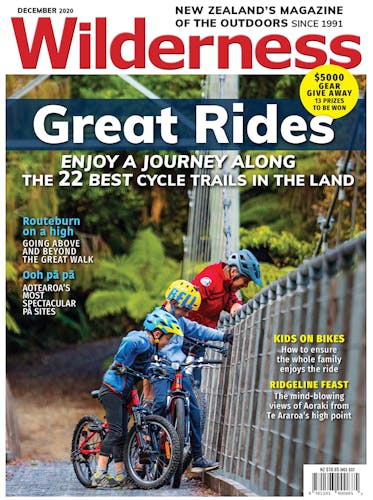Ray Salisbury’s book Tableland: The History Behind Mt Arthur details the colourful history of Kahurangi National Park’s Mt Arthur Range, including the story of his ancestors who were the first Europeans to settle the area.
Why did you write Tableland?
I wrote it for a myriad of reasons, but it was a labour of love – there’s no money in publishing in New Zealand. I’ve done it as a service to the community, and to put everything into one comprehensive volume.
What inspired your research into your ancestry?
My father, grandfather, great grandfather and I have all written books on our history. In 1996, my father, older brother and his two kids and I did a seven day trip around Mt Arthur, Cobb Valley and the Tablelands. Every night my brother would read from one of the books around the fire, and I got really inspired – this is where we started in New Zealand, the first people to find the gold, build the huts and put sheep up there. They had an entrepreneurial spirit, forging through and pioneering in this part of New Zealand. There are two Salisbury creeks in Kahurangi, and our name is on Salisbury Lodge, so there’s a little bit of family pride there.
You must feel quite a connection to the land.
I’ve spent 80 days in the Tablelands, Cobb Valley and Mt Arthur – 80 days and nights wandering on my own. When you do that, you develop an affinity for the land – you feel it’s yours and you want to protect it.
Is there something you discovered while researching the book that stands out?
The most surprising discovery was Te Mana Nui, an intricate cave system only recently discovered by the Nelson Speleological Group. One of the tunnels was named Salisbury Underground because it resembles a subway. For five seasons, I had been a hut warden at Salisbury Lodge without the foggiest notion that people were crawling around below me. Other interesting discoveries included a 1967 chopper crash on the Arthur Range, where two men died. A third man jumped clear, and walked out for six hours down the Baton Valley. The most significant discovery was Thomas Salisbury’s letter to the Colonist paper in March 1863, detailing his discovery of the Mt Arthur Tableland. He unintentionally began the gold rush there.
What makes the Tableland unique?
It’s a microcosm of everything in New Zealand. It has more than half of New Zealand’s native plant species, the deepest and longest caves – and they’re still finding new caves, and more moa bones. It also has the highest earth dam in New Zealand and the largest continual trapping network. The area punches well above its weight.
The Heaphy Track was your first overnight tramping experience – how was it?
It was on my first South Island trip and dad dragged my twin brother, my sister and me along. I was 11. I had a huge oversized duffel bag which dug into my shoulders, and gumboots which gave me blisters. It was a pretty big ask for me – it was probably about 90km at the time, and the huts were awful. You would open a door and a possum would run out, and there would be rat droppings everywhere and no water.
But you weren’t put off tramping?
It didn’t put me off – I was really fit and a natural runner. I was in the boys’ brigade for nine years and we did a lot of tramping in the mud and rain in the Waitakere and Coromandel ranges. And it was always in winter. But we had people to look up to in the brigade and legends who inspired me.
Tableland: The History Behind Mt Arthur is available in the Wilderness store. Subscribers get a 10% discount. Buy it here.








